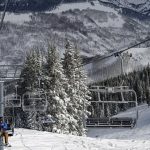Like neutral cushioning and stability, motion control has been one of the traditional categories that performance running footwear brands and retailers have used to segment their products.
Growth rates for each category show a shifting marketplace. According to retail point-of-sale data compiled by SportScanINFO, the motion control sub-category in running footwear has suffered for at least the last two years. Sales in 2008 decreased in double-digits versus 2007, which itself had decreased at an even higher rate compared to 2006. Unfortunately, 2009 does not look to be off to a much better start as category sales declined in the high-single-digits for February even as the broader performance running business grew in mid-single-digits for the period.
Rod Foley, director of marketing for running footwear at Mizuno USA, notes that the audience for motion control footwear has changed. He says, “There are still an awful lot of motion control shoes sold, but I would argue that fewer and fewer are being sold to run in and more are being sold to people who have serious issues with their lower legs or people who have jobs that require them to stand for long periods of time.”
Rick Wilhelm, vice president of specialty retail sales at Brooks Sports, Inc., suggests that as sales have declined, the definition of motion control has also evolved. “Terminology around the category of motion control itself has changed, says Wilhelm. “I think motion control has this connotation of being slow and big and thats really not true. High school athletes wear motion control and they are certainly fast.”
Many performance running footwear brands no longer use the motion control name in their product lines. Isaac “Ike” Alvear, executive director of performance brands at American Sporting Goods, which encompasses the AVIA, Ryka & Nevados brands, offers that ASG does not focus on the term “motion control,” instead opting to focus on guidance. “There is a movement in forward-thinking running specialty to position shoes on a guidance scale,” says Alvear. “Some call it a
pronation control rating. We have adopted the guidance scale of 110. A racing flat would have a zero degree of guidance and on the far end of the scale a shoe like the [Brooks] Beast would represent a 10.”
Terry Schalow, product manager for performance running at ASICS, comments that the market leader in running doesnt use the term “motion control” anymore either. “We use maximum support,” says Schalow. “From our perspective, there is a different way to look at the concept of motion control. For us, its an enhancement of proper motion rather than motion control. Some people may see that as semantics, but from our perspective that is a very accurate way of providing product solutions for those that would be deemed severe overpronators.”
Schalow suggests there are two basic reasons for the decline of the motion control category. First, shoes in the stability category have improved. “That category of runner who traditionally could not get into a stability shoe can now find a product solution in the stability category that they couldnt find in the past,” he suggests. “The stability category has a lot of offerings that reach that subset of overpronators.”
Second is a shift in understanding of the type of runner that needs a motion control shoe. “The research has shown that there is a better way [to control overpronation]. A lot of people deemed candidates for motion control shoes can now find product solutions in the stability category,” he reports.
Foley adds, “We are trying to build a shoe that hits such a sweet spot that it works for many different people. Were deriving control through the shape, geometry and sculpting of the shoe versus just putting a bigger post or device to stop pronation. Thats allowed shoes to get lighter and run better than some of their predecessors. Shoes that would traditionally have been pigeonholed as strictly stability shoes have morphed to fit the motion control customer. Theres a wider range of customers that can fit into it [stability].”
Eric Vassall, senior product manager for running at New Balance, reports, “Everyone is looking at how they can evolve the product even further. Companies are spending a lot of time developing midsole technologies in terms of compensating for overpronation and cushioning. Everyone is looking at how you can deliver a product that will actually help that person through their gait cycle.”
Schalow notes that the design and engineering of motion control shoes has shifted from addressing motion control at the heel to addressing it at the mid-foot. He explains, “You want the heel to deform to some degree to slow down the rate of pronation at impact. As the foot approaches mid-stance thats where the potential for severe overpronation can occur and the arch is collapsing inward. Thats where the shoe really needs to support the foot. You are seeing an influx of mid-foot stabilization devices engineered into the shoe that prevent excessive collapse.”
Research into a runners biomechanics has changed the way footwear designers approach the problem. Schalow says, “Research in biomechanics has led us to conclude that the old ways of providing support and stability are not exactly what the runner needs. In fact, creating that very blocky, stiff, super stable platform was in fact blocking the proper and natural motion the foot takes through the gait cycle. If you are blocking the natural motion of the foot you may in fact be creating an environment that could lead to injury.”
Wilhelm also sees a change at the specialty retail level.
“I think specialty running has changed their philosophy,” he suggests. “Todays runner is running less than they were five years ago. If you were doing 30 miles a week and you had some injury problems you were very protective of what kinds of shoes you tried. People arent running as much. They run every other day and do it with their other activities. Shop owners arent as concerned that they have a corrected solution [for overpronation] for everyone walking in the door.”
Foley agrees, “More people are doing more gait analysis in the retail setting. There has been a shift in thought that people are less concerned about stopping pronation than controlling the rate and allowing some of it to happen, but controlling the speed of how it happens.”
Consumer perceptions may also be a contributing factor. Vassall says,” The words motion control have the connotation of big and clunky. For some customers, motion control doesnt resonate for them. The person who is wearing a motion control shoe doesnt want to look like they are wearing a motion control shoe. Previous models in the category looked old and stodgy. They want to [see] a more performance-based look to it.”
Stephanie Terrell, owner of Bettysport & Rogue Equipment in Austin, TX, offers her take on the issue. “When consumers pick up a motion-control shoe they feel how heavy and bulky it is,” she says. “Then they pick up a lighter stability shoe and they are questioning do I really need to go with this heavy brick? It seems fewer and fewer people are needing that much control.”
Alvear agrees, “The motion-control shoes historically have never looked fast or fun to run in. Most retailers carry one or two lines to address customer needs. At the end of the day, at specialty retail I see less motion-control out in the marketplace and more structured cushion and more overbuilt cushioned shoes.”
As the performance running specialty market continues to evolve with new footwear designs based on biomechanics and a better understanding of solving runners problems like overpronation, the motion control category may become an even narrower niche market.
Editors note: See February 2009 PSR for “Theres Nothing Neutral about Cushioning.” www.PerformanceSportsRetailer.com.












